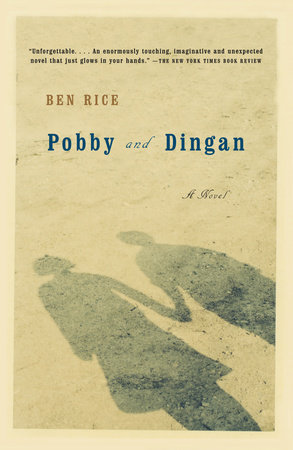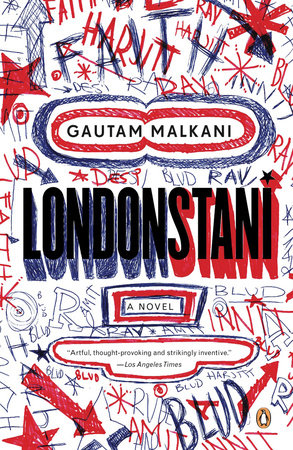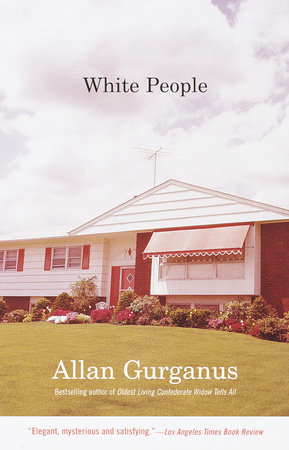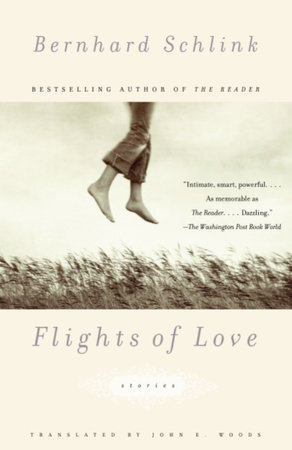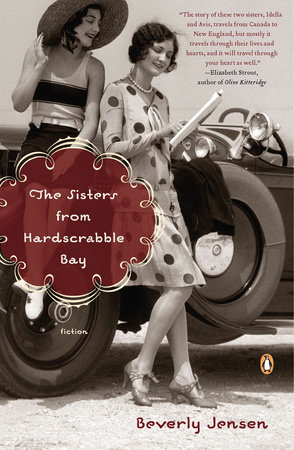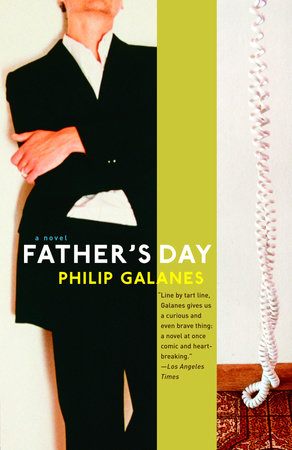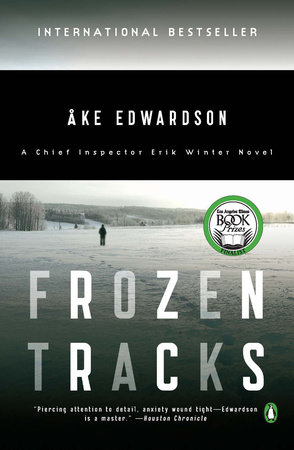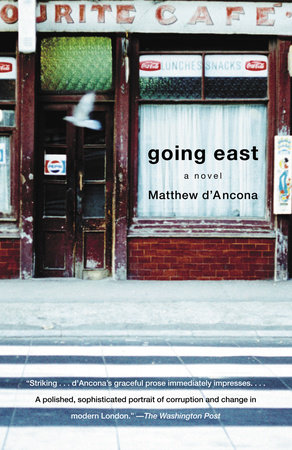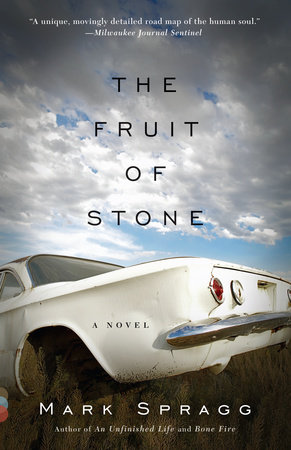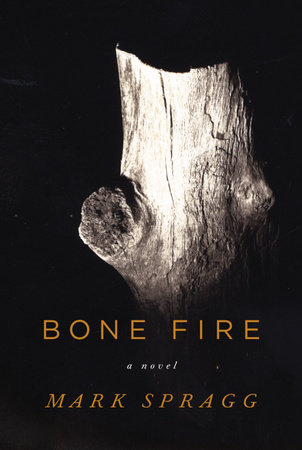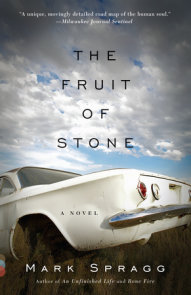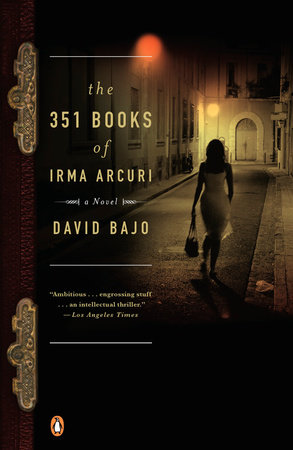Author Q&A
Q: You’ve said that the genesis of Bone Fire started with a series of reoccurring daydreams of Einar Gilkyson tending a huge fire of bones and antlers. Where do you think this particular image came from?
A: I’d guess the image emerged from that part of my subconscious that yearns for a sense of completion and comfort and rest. Einar appeared very satisfied in my daydreams, calm in the firelight at the very end of his life but not at all disturbed by the idea of death. I believe it was because of Einar’s apparent ease that I began to wonder about all of the old men who must have — through the centuries of human existence — sat in the night warming themselves at a fire, perhaps reflecting about how they’d managed with their lives. It was his fearlessness that was initially attractive.
Q: Bone Fire takes place many years after An Unfinished Life. You’ve also said that you didn’t intend to write another novel set in Ishawooa, but found that you had to in order to satisfy your curiosities about these people. How did you know you weren’t finished with them? And how did you decide to revisit them at this particular moment in their lives?
A: There was primarily the image of Einar at the fire, but then I became obsessed with Griff, the little girl in An Unfinished Life, wondering about what she might be like as a young woman, and then Paul, the little boy from The Fruit of Stone, wondering about the young man he had become. I was surprised every step of the way that I had so many unanswered questions about the characters from these previous two novels, and that their lives had become so linked together in my imagination.
Q: Many people have an idealized view of the West as a place that in many ways is frozen in time. Is this something you think about, trying to create a more accurate accounting of it in your work?
A: It’s very natural for me to set my books in the West because it’s where I grew up and have lived for most of my adult life. I care for the place enough to try, at the very least, to render it accurately. Idealizing anything — a region, a religion, an individual — strips it of its humanity, and one is left with only parody. So yes, I try my hardest to write the reality of what I know.
Q: Further to that point, early in this novel Crane Carlson, the sheriff, finds a teenager murdered in a meth lab, a crime he’ll continue to investigate throughout the book. Natural beauty and violence seem to intersect in your novels in surprising ways, each really shining a laser-sharp beam on the other. Is that contrast intentional?
A: The contrast may be more unavoidable than intentional. Certainly, there’s violence everywhere, but perhaps in a starker landscape — one-half of Wyoming is owned by the Federal Government in the form of parks and national forests and wilderness areas, and there’s quite a lot of deeded land that remains undeveloped — violence appears to be more shocking, strangely more personal.
Q: When Marin first comes across Griff’s ceramic figures she thinks, “It was as though the earth had thrown up an accumulation of its dead, rearranging parts into this resurrection of creatures,” and later tells Griff, “The figures you made, they made me feel like I was ready to pass on.” How do you see Griff’s art, what it means to her and also its place in the novel?
A: Griff’s assemblages have become for me a sort of statuary of inclusiveness. There’s very little in Griff’s worldview that’s identified as “other,” and her figures are representative of her hopefulness. Many of them are reaching upward, pleading for tolerance from a brutal world.
Q: Can you talk a little about the relationship between McEban and Kenneth, and where in your life or imagination that relationship comes from? Kenneth is the same age as Griff was in An Unfinished Life. Is it a coincidence that both novels feature a child around the age of ten? How does having a child’s perspective feel important to you?
A: I particularly love children at that age. They’re remarkably capable without owning the self-consciousness of adolescence, or the arrogance. They seem to me uncommonly brave and insightful, and even in very bad situations, at ten they still seem hopeful, believing that they might make a difference in the world. There was also the ten-year-old Paul in The Fruit of Stone. So, clearly this is an aspect of human relationship about which I am utterly fascinated.
Q: Kenneth is a boy in a world of men, much as Einar remembers being as a child. It’s a childhood filled with fun but also one very much about apprenticeship and learning how to become a man. When he’s taken out of this world and thrust into a more conventional childhood — the one with ipods and channel surfing — he’s miserable. Why did you decide to put him in this situation?
A: I believe children want to be useful. Further, I believe that each of us yearns to contribute to something grander than ourselves, to become part of a family, a community. This rather modern notion of childhood as an eighteen-year stretch of unfettered play and irresponsibility was not my experience.
Q: Of your own childhood, you’ve said: “My appetite for quietude, no doubt, has something to do with being raised on a National Forest just off the edge of the Yellowstone Plateau. We couldn’t get television or radio reception, and of course the Internet was years away. I was raised with the luck of silence.” Could you expand on that particular piece of luck?
A: More specifically I was raised without distraction. There were no electronic screens, however large or small, or supposedly informative and essential to my happiness, that I looked to for entertainment or information. There were the people around me, and the natural world, and I was required to be engaged. I was not allowed to be merely a spectator. There was nothing about my boyhood world that was virtual, and I suppose I miss being that completely undistracted in my day-to-day life.
Q: Both Crane and Einar are coming to terms with what one might call “the end.” When Crane gets a medical diagnosis he’s been both expecting and dreading, he rushes straight for the arms of his ex-wife, whom he hasn’t seen in twelve years. And Einar, in his late years, is suddenly visited by his sister, Marin, who hasn’t “come home” in decades. Why do people who’ve remained absent from their lives for so long come to play such pivotal roles?
A: I suppose it’s a way, for each of them, of trying to salve any regrets they might harbor about their lives, any longings which still beg for satisfaction. While they’ve come to accept their deaths, they’re still searching for miracles, even in the most unlikely of places.
Q: Griff is torn between pursuing a future that seems likely to take her elsewhere and the responsibility she feels to stay in her home town and take care of her grandfather, even though Einar urges her not to. Paul, too, is struggling with moving forward while feeling he can’t do so without betraying his own sense of duty. Can you talk about how this tension between past and future shapes your novel?
A: To some degree I feel this tension shapes all of us. How much of our lives do we owe to family and friends and social expectation? When does tending ones own dreams translate merely into selfishness, or in Griff’s case, does an artist only owe allegiance to her art? At the root of the question is each person’s definition of belonging. Do we belong to something greater than family? Do we describe family by blood or intention?
Q: What do you think Einar knows — thanks to his long, long life and all the suffering and joy that has come with it — that they’re only beginning to understand?
A: I think that Einar’s come to some sense of peace at the end of his life. Perhaps it is that he’s gotten old enough finally, and honest enough, not to regret the opportunities he’s missed, while mostly, the young are struggling not to miss a thing. A couple of lines from Frost’s After Apple Picking, might best illustrate what I’m thinking about with Einar: “… and there may be two or three/Apples I didn’t pick upon some bough./But I am done with apple-picking now.” And further: “For I have had too much/Of apple-picking: I am overtired/Of the great harvest I myself desired.”
Q: So, are these characters still visiting you in daydreams? In other words, can we expect to see any more of them in the future?
A: I sincerely hope to be done with them. I believe I’ve said everything I need to about them, and satisfied my curiosity about their lives. I could imagine some of them re-emerging perhaps in a short story, but certainly not a novel.



